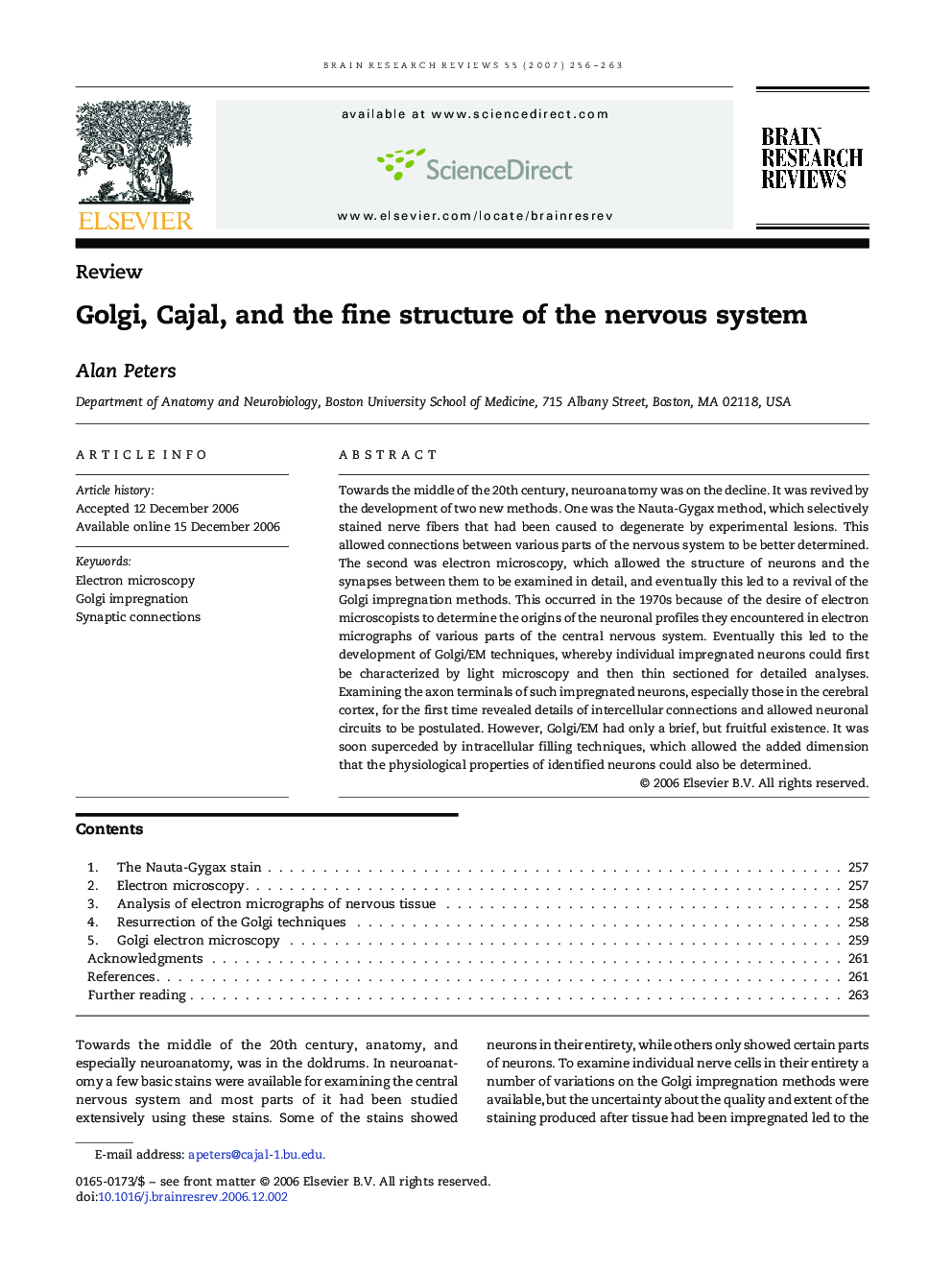| کد مقاله | کد نشریه | سال انتشار | مقاله انگلیسی | نسخه تمام متن |
|---|---|---|---|---|
| 4333949 | 1294760 | 2007 | 8 صفحه PDF | دانلود رایگان |

Towards the middle of the 20th century, neuroanatomy was on the decline. It was revived by the development of two new methods. One was the Nauta-Gygax method, which selectively stained nerve fibers that had been caused to degenerate by experimental lesions. This allowed connections between various parts of the nervous system to be better determined. The second was electron microscopy, which allowed the structure of neurons and the synapses between them to be examined in detail, and eventually this led to a revival of the Golgi impregnation methods. This occurred in the 1970s because of the desire of electron microscopists to determine the origins of the neuronal profiles they encountered in electron micrographs of various parts of the central nervous system. Eventually this led to the development of Golgi/EM techniques, whereby individual impregnated neurons could first be characterized by light microscopy and then thin sectioned for detailed analyses. Examining the axon terminals of such impregnated neurons, especially those in the cerebral cortex, for the first time revealed details of intercellular connections and allowed neuronal circuits to be postulated. However, Golgi/EM had only a brief, but fruitful existence. It was soon superceded by intracellular filling techniques, which allowed the added dimension that the physiological properties of identified neurons could also be determined.
Journal: Brain Research Reviews - Volume 55, Issue 2, October 2007, Pages 256–263